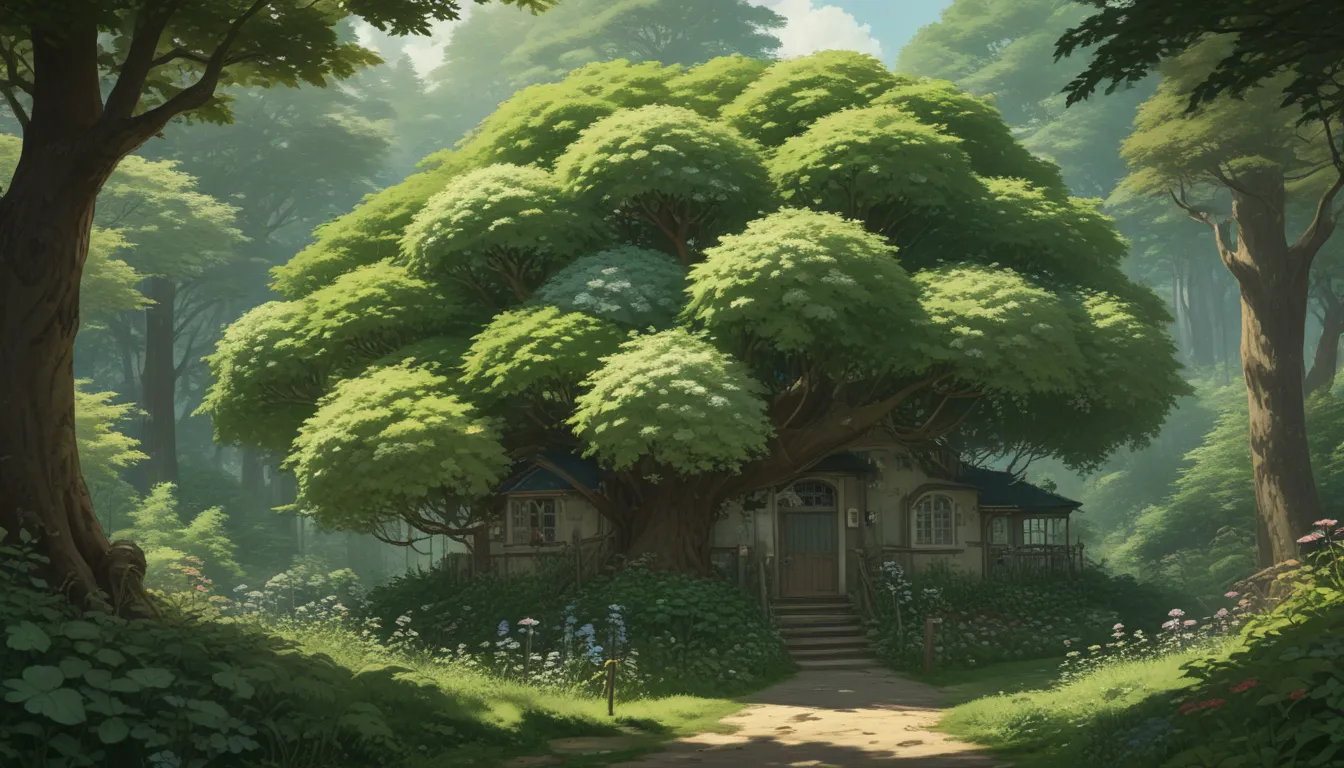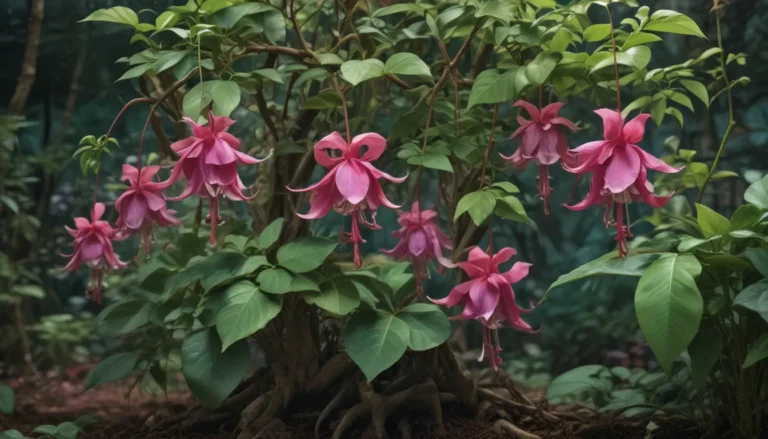All You Need to Know About Growing and Caring for Oakleaf Hydrangea

If you’ve ever admired the beautiful blooms of traditional hydrangeas but are looking for something with a unique twist, let me introduce you to the lesser-known, yet equally charming oakleaf hydrangea.
Hydrangea quercifolia, native to the southeastern United States, is a fascinating flowering deciduous shrub that brings a touch of elegance to any garden. With leaves reminiscent of oak trees, beautiful blooms, and exfoliating bark, this plant stands out for its aesthetic appeal.
In this comprehensive guide, we will explore everything you need to know about growing and caring for oakleaf hydrangeas, from cultivation and history to propagation, growth tips, pruning, maintenance, cultivar selection, pest management, and more. By the end of this article, you will have all the information you need to cultivate this plant successfully and add seasonal interest and beauty to your garden.
Let’s dive into the world of oakleaf hydrangeas!
What Are Oakleaf Hydrangeas?
Oakleaf hydrangeas, scientifically known as Hydrangea quercifolia, are known for their distinctive leaves that resemble those of oak trees. This deciduous shrub is native to the southeastern US and can be found in a variety of habitats, from woodlands to stream banks.
Unique features of oakleaf hydrangeas include:
- Oak-like leaves that add texture and interest to the garden.
- Long, graceful, panicled flowers that change color from greenish-white to pink and eventually brown.
- Exfoliating bark that provides winter interest after the leaves have fallen.
While the plant is visually appealing, it’s essential to note that the flowers, leaves, and bark contain hydrangin, a mildly toxic compound. Avoid ingestion of any part of the plant to prevent adverse reactions.
Cultivation and History
The oakleaf hydrangea has a rich history, with Native American Cherokees using the plant for various medicinal purposes. First described by American botanist John Bartram and illustrated by his son William, this shrub has been appreciated for its unique leaves and flowers.
Over the years, breeders have developed cultivars of the species, leading to the creation of compact varieties like ‘Ruby Slippers’ and ‘Munchkin.’ These cultivars offer gardeners a range of options for adding oakleaf hydrangeas to their landscapes.
Propagation
If you’re interested in growing oakleaf hydrangeas, you have several propagation options to choose from:
- From Seed: Propagate the plant from seed, collected from existing plants in late fall or early winter. Seeds should germinate in less than two weeks.
- From Cuttings: While challenging, propagation from cuttings is possible. Take cuttings in late spring to early summer and use rooting hormone for the best results.
- Via Layering: Ground layering is a hands-off propagation method that involves burying branches in the soil to encourage root formation.
- From Seedlings/Transplanting: Transplant young seedlings in early spring or early to mid-fall, ensuring they have fertile, well-draining soil and partial shade.
Each propagation method has its benefits and challenges, so choose the one that suits your gardening style and goals.
How to Grow Oakleaf Hydrangeas
Once you’ve propagated your oakleaf hydrangeas, it’s essential to provide them with the right growing conditions to thrive. Here are some tips for successful cultivation:
- Climate and Exposure Needs: Plant your hydrangeas in USDA Zones 5 to 9, ensuring they receive morning sun and afternoon shade. They can bloom in full shade, making them versatile for various garden conditions.
- Soil Needs: Provide well-draining, fertile soil with a pH range of 6.0 to 7.5. Incorporate organic matter into the root zone in spring for optimal growth.
- Water and Fertilizer Needs: Keep the soil moist but not waterlogged, especially during the growing season. Fertilize monthly from May to July to support blooming.
To help your plants thrive, ensure they receive adequate water, light, and nutrients while avoiding common pitfalls like overwatering and improper fertilization.
Pruning and Maintenance
Oakleaf hydrangeas are low-maintenance plants that require minimal pruning. However, you can prune them in early spring to shape them or remove dead/damaged branches. Deadheading old blooms can improve the plant’s appearance, while mulching can help retain moisture and prevent weeds.
By following these simple maintenance practices, you can keep your oakleaf hydrangeas healthy and vibrant throughout the year.
Oakleaf Hydrangea Cultivars to Select
In addition to the standard species, oakleaf hydrangeas offer a range of cultivars with unique features. From large varieties like ‘Alice’ to compact options like ‘Pee Wee’ and ‘Snowflake,’ there’s a cultivar to suit every garden. Choose based on your space constraints, aesthetic preferences, and desired bloom colors.
Experimenting with different cultivars can add diversity and visual interest to your garden, creating beautiful focal points and mixed border displays.
Managing Pests and Disease
While oakleaf hydrangeas are less susceptible to common health issues than other hydrangea species, they can still experience pest and disease problems. Keep an eye out for herbivores like deer, insects such as aphids, Japanese beetles, and spider mites, as well as diseases like bacterial leaf spot, powdery mildew, and root rot.
Implement preventive measures like physical barriers, beneficial insects, and organic treatments to manage pests and diseases effectively and protect your plants from harm.
Best Uses of Oakleaf Hydrangea
Whether planted as single specimens, mass plantings, mixed borders, or foundation plants, oakleaf hydrangeas offer versatility in garden design. Use them to create focal points, add seasonal color, or enhance shaded areas with their unique foliage and blooms. You can also enjoy their flowers in floral arrangements, bringing a touch of elegance indoors.
Experiment with different planting schemes and companion plants to create stunning landscapes that highlight the beauty of oakleaf hydrangeas in various settings.
Quick Reference Growing Guide
To summarize the key points covered in this guide, refer to this quick reference table for essential information on growing oakleaf hydrangeas:
- Plant Type: Flowering deciduous woody shrub
- Flower/Foliage Color: White, purple-pink/green (red, orange, yellow, purple in fall)
- Native to: Southeastern United States
- Maintenance: Low
- Hardiness (USDA Zone): 5-9
- Tolerance: Full shade, full sun, moderate drought
- Bloom Time: Summer
- Soil Type: Fertile, organically rich
- Exposure: Partial shade
- Soil pH: 6.0-7.5
- Spacing: Width of mature spread
- Soil Drainage: Well-draining
- Planting Depth: Just below soil surface (seed), depth of root system (transplants)
- Height: 4-10 feet
- Spread: 4-10 feet
- Growth Rate: Moderate
- Water Needs: Moderate
- Common Pests and Diseases: Aphids, Japanese beetles, spider mites; bacterial leaf spot, powdery mildew, root rot.
Use this reference guide as a quick resource for growing and caring for your oakleaf hydrangeas throughout the year.
Don’t Snub This Shrub
As we conclude our exploration of oakleaf hydrangeas, remember the unique beauty and versatility of this plant in the garden. From its distinctive foliage to its charming blooms and low-maintenance nature, oakleaf hydrangeas offer gardeners an excellent choice for adding seasonal interest and elegance to their landscapes.
By incorporating these shrubs into your outdoor spaces, you can enjoy their beauty throughout the year while creating stunning displays that enhance your garden’s appeal.
If you have any comments or questions about oakleaf hydrangeas or garden plants, feel free to reach out below. Your feedback is always welcome!
For more hydrangea knowledge and gardening tips, be sure to explore our other guides:
- How to Grow Hydrangeas for Big Blossomed Beauty
- 7 Reasons Why Your Hydrangea May Not Bloom
- How to Grow and Care for Panicle Hydrangea
With this wealth of information at your fingertips, you’ll be well-equipped to cultivate a thriving garden filled with beautiful plants like oakleaf hydrangeas. Happy gardening!





